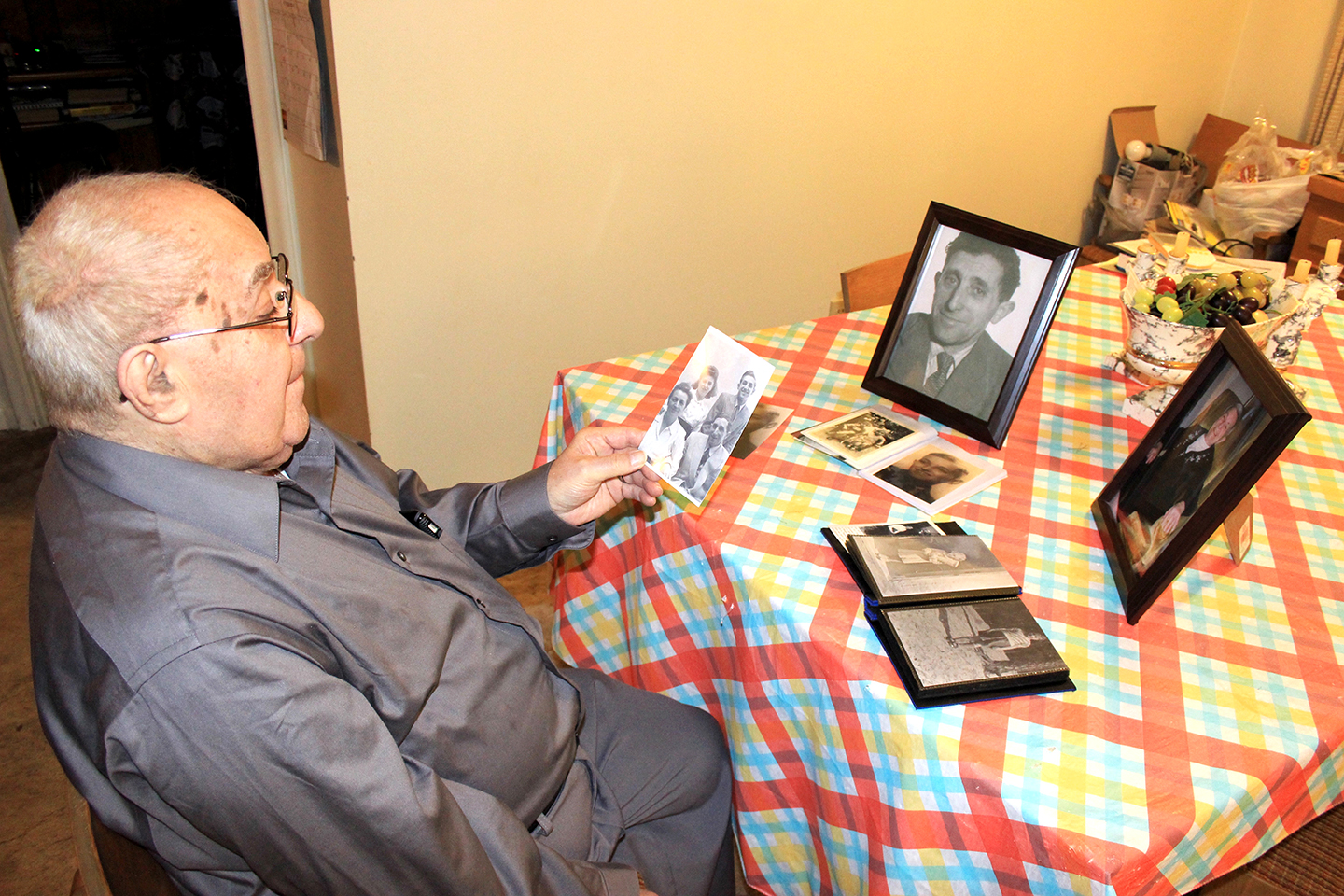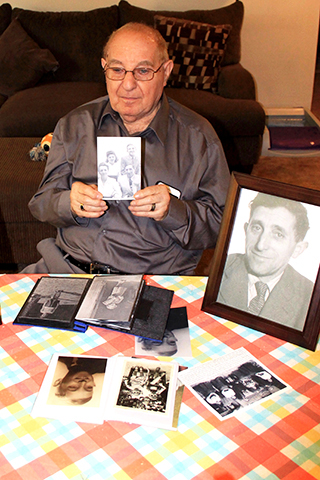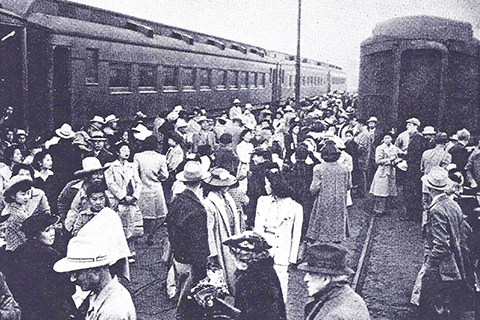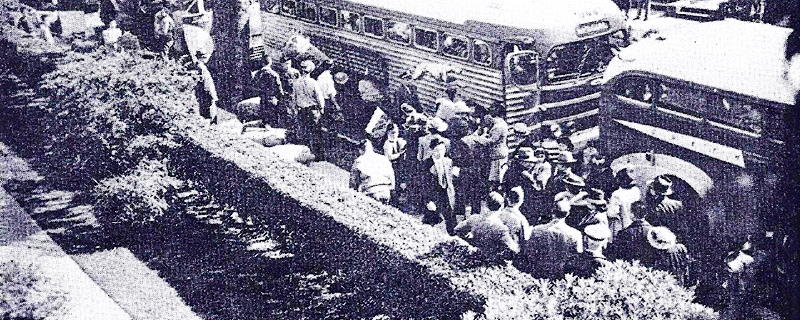Oakland University to share survivors’ stories of racial discrimination during World War II

A Jewish man whose family fled from Nazi Germany to Shanghai in 1940 and a Japanese-American woman who was forcibly relocated with her family to an internment camp in California in 1942 will share their stories of surviving racial discrimination during World War II during a special presentation from 1-3 p.m. Nov. 8 at Oakland University.
 |
| Alfred Zydower, a Jewish man whose family fled from Nazi Germany to Shanghai in 1940, will share his story on Nov. 8 at Oakland University. |
“These stories need to be shared, and unfortunately, this may be our last chance to hear them from a firsthand perspective,” said Seigo Nakao, Ph.D., an associate professor of Japanese at Oakland University. “This event provides people with a unique experience, and it gives us an opportunity to explore a topic that is often overlooked in our history.”
The event is made possible through the Judd Family Endowment Fund.
“The Judd Family Endowment Award was established in 2008 by the Judd family to provide Oakland University and the College of Arts and Sciences with the opportunity to sponsor programs in the humanities and arts, a passion of the Judd Family,” said Lori Posey, donor relations and stewardship coordinator for Oakland University’s College of Arts and Sciences.
Alice Sano of Ann Arbor and Alfred Zydower of Madison Heights will serve as guest speakers during the event, which will be held in Gold Room C at the Oakland Center.
“When I first heard their stories, I knew they needed to be shared,” Nakao said.
Born on Nov. 15, 1929 in Fürstenwalde, Germany, Zydower lived with his mother, father, sister, uncle and other relatives in a building shared with other families.
They attended services at nearby synagogue until it was set on fire during the “Kristallnacht,” a series of attacks carried out by the Nazi Party in November 1939 that resulted in substantial damage to several Jewish synagogues, homes, schools and business, as well as the deaths of nearly 100 Jewish civilians.
“It was devastating,” Zydower said.
After the attacks, the family arranged for passage to Shanghai, which was one of the only locations in the world unconditionally open to Jews at the time. They arrived on Sept. 14, 1940 and shared a one-room apartment with relatives who had relocated there earlier.
“It was very crowded,” Zydower said. “If you had a kitchen, it became your eating, sleeping, cooking and living area.”
Following the occupation of Shanghai by the Japanese in 1942, the family was forced to relocate to the “Hongkew Ghetto,” also known as the Restricted Sector for Stateless Refugees. The area lacked running water or functioning toilets, and hunger and disease were common.
“Our house was full of bed bugs,” Zydower said. “And they would leave corpses in front of the building until they were picked up. It was not a nice place to live.”
The family remained in the Hongkew Ghetto until 1948, when they were able to secure passage on the USS General Gordon, an army ship. They initially arrived in San Francisco, but were sent to Detroit by the resettlement agency.
“The agency asked my father where we wanted to go, and he told them he had a cousin in New York,” Zydower said. “But New York wasn’t taking any more refugees, so we came to Detroit.”
Zydower lived in Detroit for several years, working as a cook and baker. For the past 38 years, he has lived in the city of Madison Heights.
“I love America,” he said. “When I first got off the boat in San Francisco, I thought I was in paradise. Everything is so nice here.”
Like Zydower, Sano’s story also begins overseas. Her father, Joseph Sano, was born on March 4, 1890 on Awaji Island in Japan.
“My dad came to the United States in 1906 as an immigrant,” Alice Sano said.
 |
| Alice Sano, a Japanese-American woman who was forcibly relocated with her family to an internment camp in California in 1942, will share her story on Nov. 8 at Oakland University. Photo courtesy the U.S. Government Printing Office, 1943. |
Joseph Sano served in the United States Army Air Service during World War I, after which he was granted naturalization as a United States citizen by a special act of Congress in 1919.
He returned to Japan in 1924, where he married Sakae Ikuta. The couple eventually returned to the United States, where they had three children – George, Roy and Alice, who was just 13 years old when her family was forced to move from Los Angeles to the Santa Anita Assembly Center in Arcadia, Calif. by Executive Order 9066.
“At 13, I didn’t really know what was happening,” Alice Sano said. “I was just happy to be with my family. But I felt bad for the adults, who had to leave everything they had behind.”
The Sano family lived at the Santa Anita Assembly Center until it was closed in 1942.
“Physically, it wasn’t a bad experience,” Alice Sano said. “We were given beds, blankets, pillows, etc. I played music and joined the orchestra. There was even a hospital there.”
When Santa Anita closed, the Sano family were relocated to Jerome, Ark. and remained there until 1943, when Joseph Sano was contracted to work as a Japanese language teacher at the Army’s Military Intelligence School hosted at the University of Michigan in Ann Arbor.
“I have no complaints about the experience,” Alice Sano said. “The government treated us well. There was nothing really frightening about it.”
Professor Nakao said he hopes the differing viewpoints offered by the two speakers will encourage people to re-evaluate their own understanding of the impact of war.
“It’s unfortunate, but a lot of younger people don’t really know what World War II was,” Nakao said. “What they know, they know from indirect experience – books, movies or television. They don’t understand the misery the war brought to innocent civilians.”
The event is free and open to the public.
 |
| Alice Sano and Alfred Zydower will share their stories of surviving racial discrimination during World War II on Nov. 8 at Oakland University. Sano was forcibly relocated with her family to an internment camp in California in 1942. Photo courtesy the U.S. Government Printing Office, 1943. |
